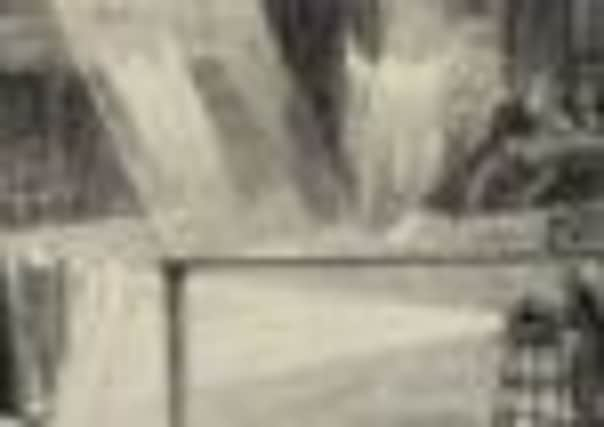The Guildhall and the Pepper’s Ghost Spectral Opera Company


The Londonderry Opera House opened in 1877 and was filled nightly with people from the city and beyond. Extra trains to and from Buncrana were supplied in the late 1800’s to bring people to entertainment venues here.
The Victorians also had a deep interest in the past and a curious bent towards seeking routes into the after life and spiritualism in general. This is perhaps briefly explained by the fact that science had begun to outweigh strict adherence to religious belief as an explanation for happenings within nature. Popular literature also reflected this. It was after all the time of Bram Stoker’s ‘Dracula’, of Sir Arthur Conan Doyle’s ‘The Hound of the Baskervilles’ and Robert Louis Stevenson’s ‘Dr Jekyll and Mr Hyde’.
Advertisement
Hide AdAdvertisement
Hide AdLondonderry’s Guildhall replaced the old town hall in The Diamond by 1890, and it quickly became a venue for entertainment as well as being the heart of the city’s political and administrative operation.


A note in the Corporation minutes of 1892 states: “The Committee granted the use of the Guildhall at a nominal charge for a concert on May 10 on behalf of the Masonic Female Orphan School, it being a charitable object. But, they declined to make any reduction in the charges to the Pepper’s Ghost Spectral Opera Company.”
What you make ask was the Pepper’s Ghost Spectral Opera Company that appeared at the Guildhall all those years ago?
The Royal Polytechnic Institute in London was a permanent science-related institution, first opened in 1838. John Henry Pepper joined the institution as a lecturer in 1848 and by 1854, he was head of the school.
Advertisement
Hide AdAdvertisement
Hide AdSeven years later in 1862, inventor Henry Dircks developed the Dircksian Phantasmagoria. This technique was harnessed to make a ghost appear on stage. Dircks tried to sell his idea to theatres but it required them to be completely rebuilt in order to support the effect and this was obviously too costly.


In late 1862, Dircks set up a booth at the Royal Polytechnic and John Pepper saw the show. Pepper quickly realised that the method could be modified to make it easy to fit it into normally constructed venues. This is possibly why the company that used the trick in Londonderry chose the newly constructed Guildhall as opposed to the smaller Opera House.
Pepper first showed the effect during a scene of Charles Dicken’s ‘The Haunted Man’ and the public raved about it. His mastering of the technique meant that his name and not Dircks became strongly associated with it and despite trying to give Dircks full credit, it is still known today as ‘Pepper’s ghost’.
An illusory technique using a plate of glass and special lighting techniques, it can make objects seem to appear or disappear, to become transparent, or to make one object morph into another. In order for the illusion to work the viewer must be able to see into the main room, but not the hidden room. The edge of the glass may be hidden in a cleverly designed pattern in the floor. The hidden room may be an identical mirror-image of the main room, so that its reflected image matches the main room’s; this approach is useful in making objects seem to appear or disappear. This effect can also be used to make an actor reflected in the mirror appear to turn into an actor behind the mirror or vice-versa. Instead, the hidden room may simply be painted black, with only light-coloured objects in it. When light is cast on the room, only the objects reflect the light and appear in the glass, making them seem as ghostly images superimposed in the visible room. The reflections in the glass, which is placed vertically, create the illusion of three-dimensional translucent ghosts.
Advertisement
Hide AdAdvertisement
Hide AdIt can only be imagined now what the reaction of those filing into the Guildhall in 1892 made of this phenomenon. But, what is known is that the phastamagorical show took off around the globe. A review of the The Spectral Opera Company’s performance is found in the annals of a New Zealand newspaper on December 28, 1900. The Nelson Evening Mail recorded: “The second appearance of Northcote’s Pepper’s Ghost and Spectral Opera Company was witnessed by another full house at the Theatre last evening. The programme of Wednesday evening was repeated, and the audience were again most appreciative and unanimous in the declaration that the entertainment is one of the best ever seen in Nelson and one worthy of the liberal patronage so far accorded to it.”
The effect is still in use to this day. The largest example of the technique can be found at the Haunted Mansion and Phantom Manor attractions at several Walt Disney Parks. A 90 foot long scene features multiple Pepper’s ghost effect, brought together in one scene.